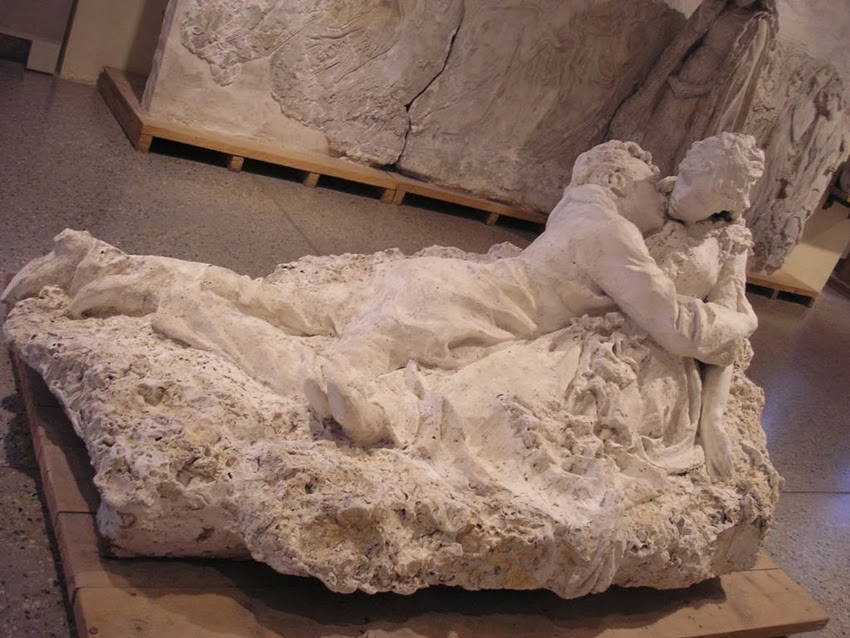Leonardo Bistolfi (1859-1933) was an Italian sculptor, an important exponent of Italian Symbolism. Bistolfi was born in Casale Monferrato in Piedmont, north-west Italy, to Giovanni Bistolfi, a sculptor in wood and to Angela Amisano.
In 1876 he enrolled in the Brera Art Academy in Milan, where his teacher was Giosuè Argenti. In 1880 he studied under Odoardo Tabacchi at the Accademia Albertina in Turin.
In 1876 he enrolled in the Brera Art Academy in Milan, where his teacher was Giosuè Argenti. In 1880 he studied under Odoardo Tabacchi at the Accademia Albertina in Turin.
His first works Le lavandaie "The Washerwomen", Tramonto ‘Sunset’, Vespero ‘Evening’, Boaro ‘Cattle-hand’, Gli amanti ‘The Lovers’, executed between 1880 and 1885, show the influence of the Milanese Scapigliatura. In 1882 he sculpted L'Angelo della morte ‘The Angel of Death’ for the Brayda tomb in the Turin cemetery known as the Cimitero Monumentale, and in 1883 he produced a bust of the painter Antonio Fontanesi for the Accademia Albertina: these works show a turn towards Symbolism which the artist was never to abandon.
From this time until 1914 Bistolfi produced many busts, medals and portraits of prominent figures including the Piedmontese painter Lorenzo Delleani, the kings of Italy Vittorio Emanuele II and Umberto I, the criminologist Cesare Lombroso, the writer Edmondo De Amicis, and the publisher and journalist Emilio Treves.
In the early 1890s he was made an honorary member of the Accademia Albertina and became secretary of the Circolo degli Artisti ‘Artists’ Circle’.
In 1892 he began a two-year task of decorating Chapel XVI of the Sacro Monte di Crea, one of the Sacri Monti of Piedmont and Lombardy which are recognised as UNESCO World Heritage Sites. In 1893 he married Maria Gusberti.



.jpg)




.jpg)
.jpeg)
.jpg)
.jpg)